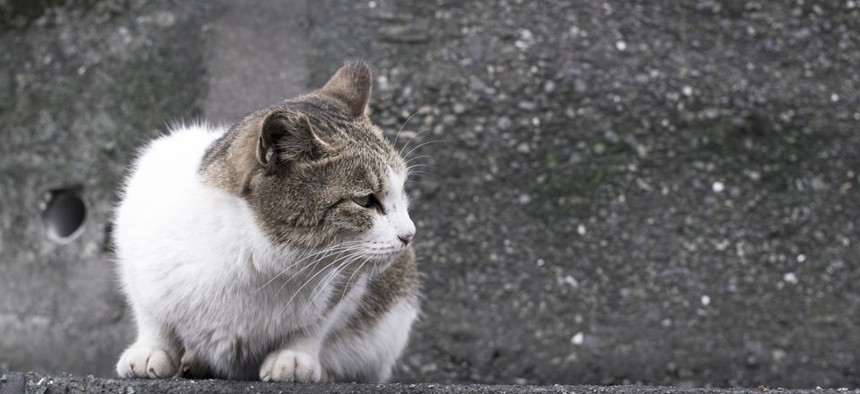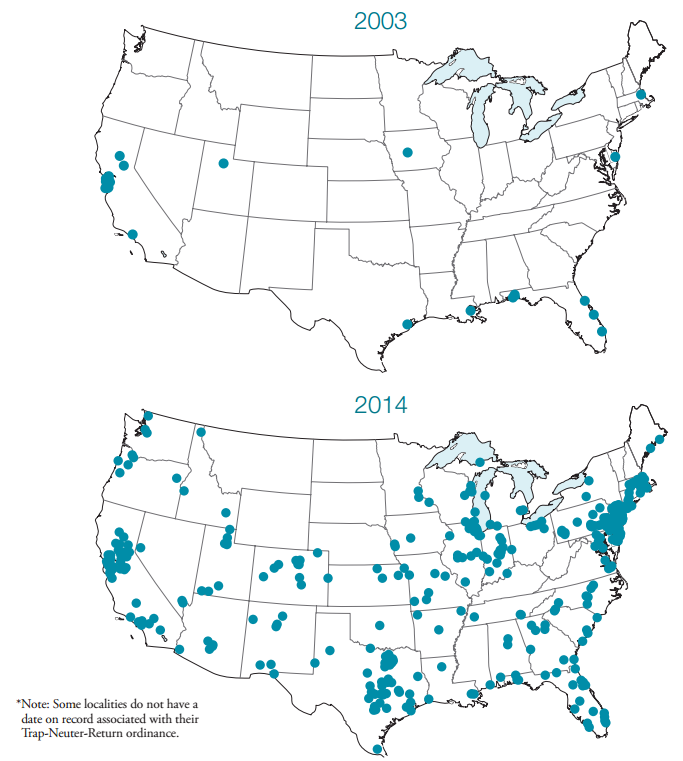Like Most Cities, Lafayette, Indiana, Is Swarming With Feral Cats

skyboysv/Shutterstock.com
One Midwestern town tries a softhearted approach to the management of free-roaming felines: calling in "Colony Caretakers"
The good, feral cats of Lafayette, Indiana, are safe, after an ordinance passed Monday evening embraced the controversial Trap-Neuter-Return method of feral cat management rather than the quicker, dirtier alternative: euthanasia. In doing so, the midsize Midwestern city has stumbled into one of the world's greatest cat controversies: To kill or not to kill?
First, a bit about the new guidelines themselves. The ordinance will create a new (and fairly complicated) feral-cat bureaucracy: Only "Colony Caretakers" will be permitted to trap free-roaming cats and bring them to local animal organizations to be be neutered and then released back into the wild. And those caretakers can only begin their cat-terventions after being approved by "Colony Sponsors," or Animal Control-recognized animal organizations. Caretakers are also expected to monitor the health of their cat colonies. Anyone found caring for a colony without Colony Caretaker status will be fined between $50 and $250 per offense, though Lafayette City Council member Lauren Ahlersmeyer told the Lafayette Journal & Courier that the authorities will not "fine gratuitously, but but rather work with residents to make sure the program actually works."
No one seems to know how many feral cats are in Lafayette; a deep dive by the Courier & Journal found the population to be in the fairly imprecise 4,691 to 26,000 range. (That latter number would mean the city has a one to three human to cat ratio.) But that's just a tiny fraction of the 30 to 40 million feral and stray cats in this country, according to Humane Society estimates. Cats are cute and occasionally cuddly, but when their populations are left unchecked, they can cause serious problems, creating messes on private property, making loud and obnoxious noises while in heat, spreading fleas, disturbing housecats—and, perhaps most controversially, killing local wildlife.
In embracing Trap-Neuter-Return, or TNR, Lafeyette's choosing a side, albeit a growing and popular one. Spaying or neutering cats, advocates allege, keeps sex-spurred behavior like pee-spraying and fighting at bay, and gradually reduces cat populations in humane, though gradual, ways. And though advocates say they can't put a number on savings to the city, many suspect that TNR is cheaper than euthenizing cats en masse.
Here's a video about TNR from Alley Cat Allies, the country's premier feral cat lobbyists and one of the foremost advocates of the strategy:
According to Alley Cat Allies, more than 430 local governments have embraced TNR with ordinances, though these documents vary in their enforcement power and mechanisms. That's up from 23 municipal ordinances in 2003. Here's their map:

But nothing comes without controversy. A number of animal and wildlife organizations have come out strongly against TNR, arguing that allowing feral cats to remain outside threatens the health of both domesticated and wild animals. The Wildlife Society's official policy position on the issue explicitly embraces the "euthanasia of unadoptable cats" as a strategy to "support and encourage the humane elimination of feral cat populations." Part of their justification? Cats kill birds. A study released last year by the Smithsonian Biology Institute found that cats kill more than one billion birds each year. Meanwhile, TNR advocates argue that feral cats are scavengers; when they do hunt, they say , outdoor cats eat rodents three times as often as birds.
The flashpoint for the conflict was probably in 2006, when Texan amateur ornithologist Jim Stevenson became the poster boy for protecting birds from cats after he shot the head off a feral cat he saw stalking an endangered shorebird near his home. (Stevenson's case was eventually dismissed ; he later alleged he had received death threats from the pro-cat faction.)
For now, however, it appears that the shotgun-free approach has won the day. The number of no-kill shelters in this country is on the rise , and Lafayette's government didn't even consider rounding up their feral cat populations and putting them in shelters (or worse). "All the cats are fine and healthy and, most of all, beautiful creatures," Lafayette resident Reta Karner, who has been informally feeding feral cats, told the Journal & Courie r. "Who are we to kill another living being?"
( Image via skyboysv / Shutterstock.com )





